BWINDI IMPENETRABLE RAINFOREST, UGANDA: A HIKE TO THE MOUNTAIN GORILLAS
The Bwindi Impenetrable Rainforest is a truly magical place. A rich ecosystem situated along Uganda’s Democratic Republic of Congo border, this expansive swath of jungle sits north of Virunga National Park. The 331 sq km of tropical jungle is home to 120 species of mammals, 350 species of bird, 220 species of butterfly and more than half of the world’s remaining mountain gorillas. A real life Ferngully, and one of the only places in the world where it’s possible to trek through the rainforest to see wild gorillas in their habitat. Below is a complete guide to my experience in the Bwindi Impenetrable Rainforest. It includes travel logistics, tracking permits, lodges, what to pack, travel tips and more.
This post contains affiliate links. When you click these links I may get a small commission that won’t cost you anything, but it does help me run this website.
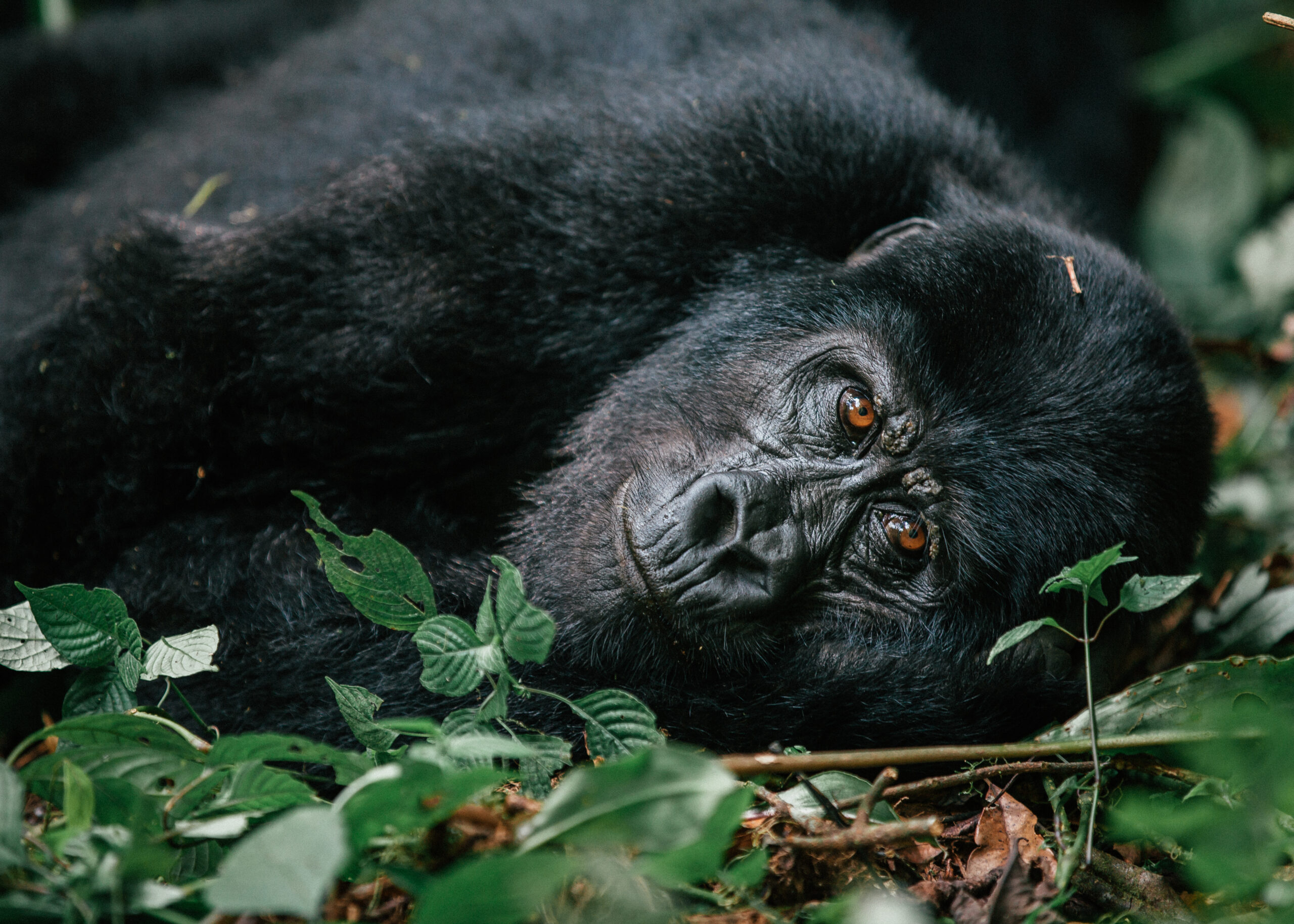
Staring a wild gorilla in the eyes is one of my most special travel experiences to date.
UGANDA TRAVEL TIPS
- PASSPORT AND VISA – A valid passport is required to enter Uganda, along with a $50 USD tourist visa. The visa can be obtained via the government’s e-immigration website at least two weeks prior to arrival.
- VACCINES – Visitors should check the CDC website and visit a health clinic to ensure they get all necessary vaccines. Some vaccines require multiple doses, so best to take care of this several months in advance.
- CURRENCY – The currency used is the Ugandan Shilling. I suggest arriving with local currency or exchanging before leaving Kampala. Outside of the capital city, money changers are far and few between, and the ATM machines are very particular about accepting cards. Also, only bring crisp bills to exchange. Bills with tears, rips or marks are not accepted.
- THINGS TO BRING ON THE HIKE – A small daypack loaded with a camera, water, lunch, compact rain jacket and tip money for the amazing rangers. Hiking sticks are also helpful for the jungle terrain.
- WHAT TO WEAR INTO BWINDI – Most trekkers were outfitted in safari clothes. I wore lightweight North Face hiking pants, a Dri-fit tank top, Dri-fit pullover, thick hiking socks, Gaiters, hiking shoes and a bandana. I’d say the Gaiters are the most important item because they add a layer of protection against the safari ants.
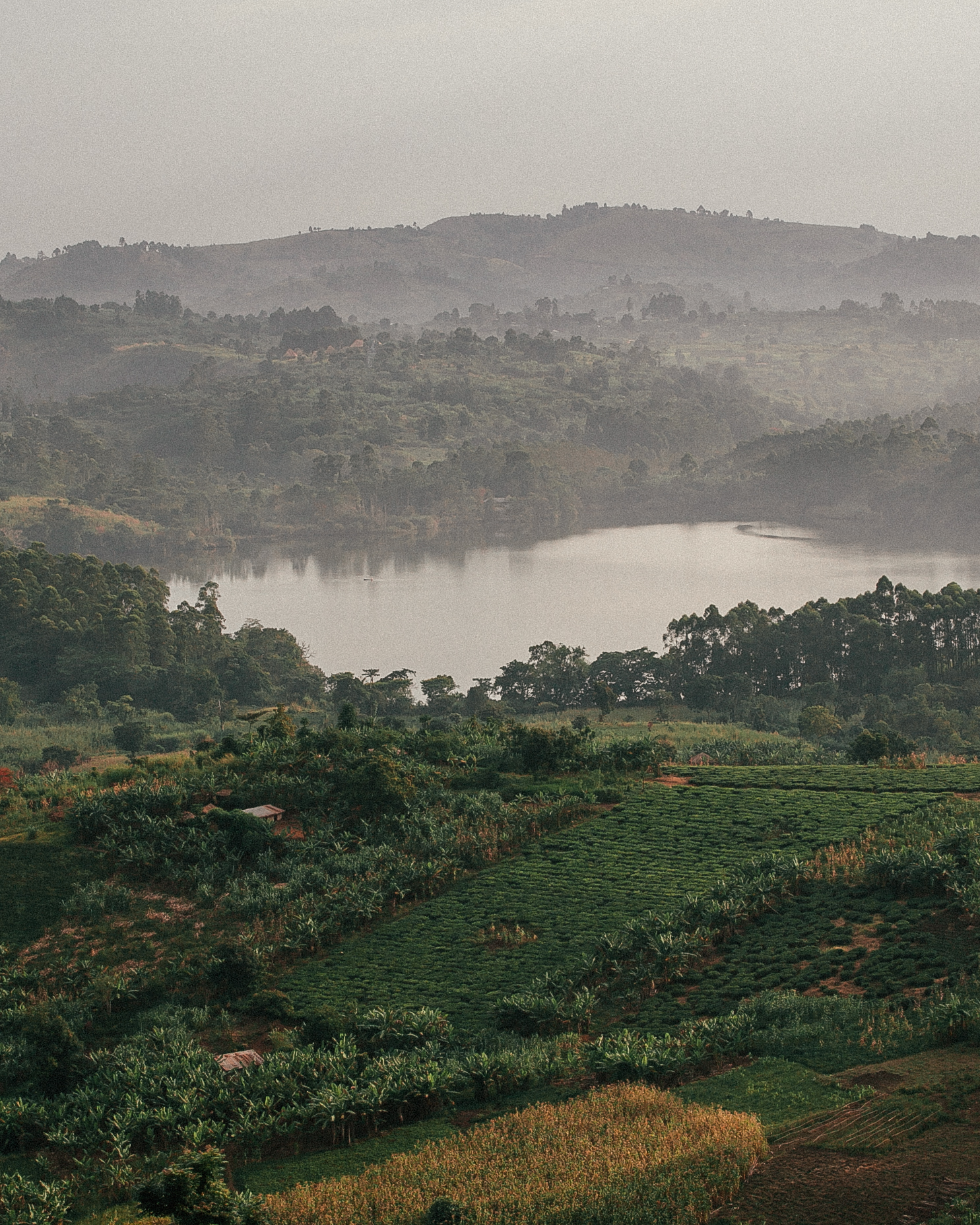
The rolling tea fields scattered throughout the Uganda countryside are stunning.
WHEN TO VISIT BWINDI
JUNE TO AUGUST AND DECEMBER TO FEBRUARY. There are essentialy two seasons in the Bwindi Impenetrable Rainforest – wet season and dry season. The rainy season runs March through May and September through November, while dry seasons spans December through February and June through August. We visited at the end of June, and the weather was perfect. No rain at all, perfect for hiking in the jungle.
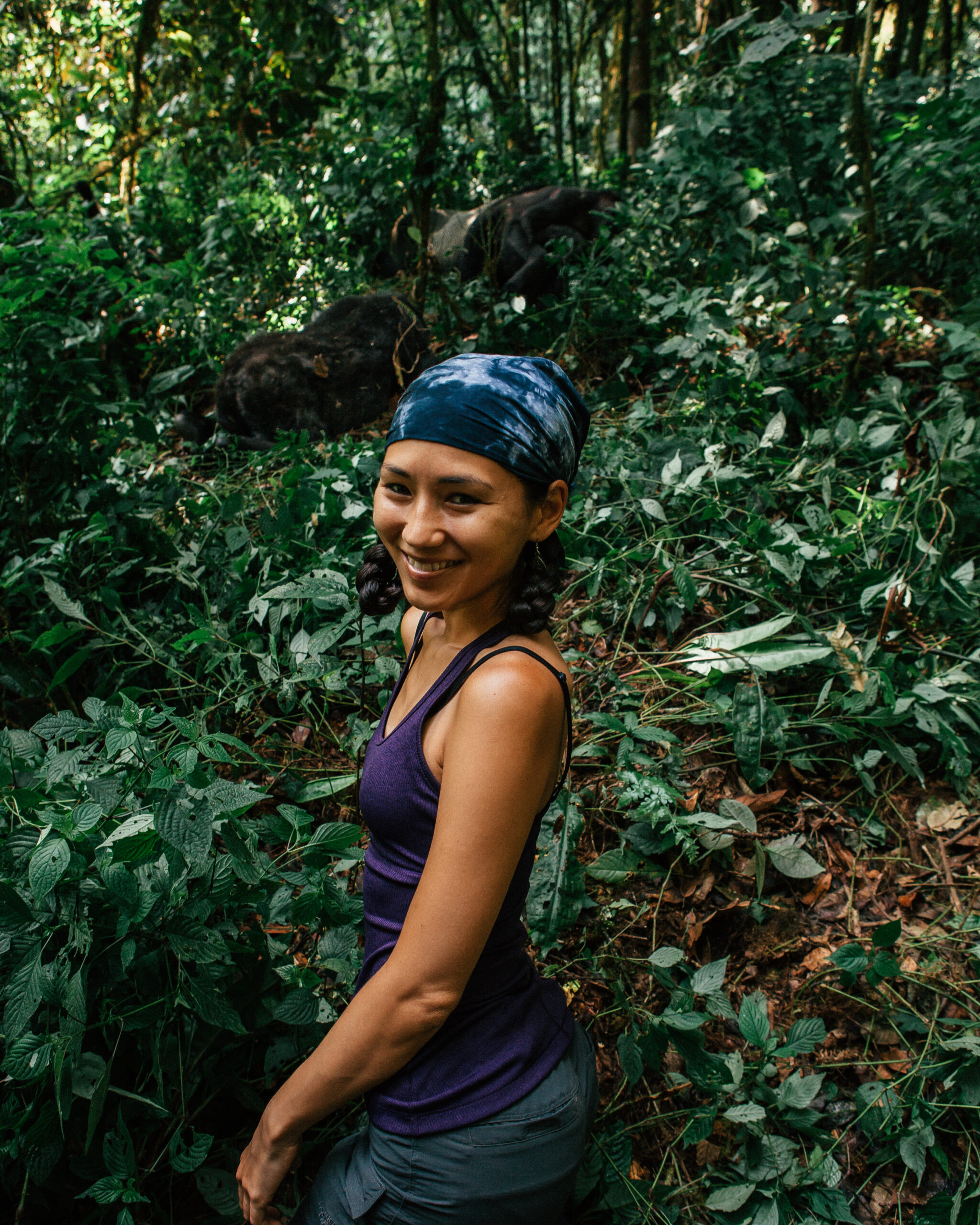
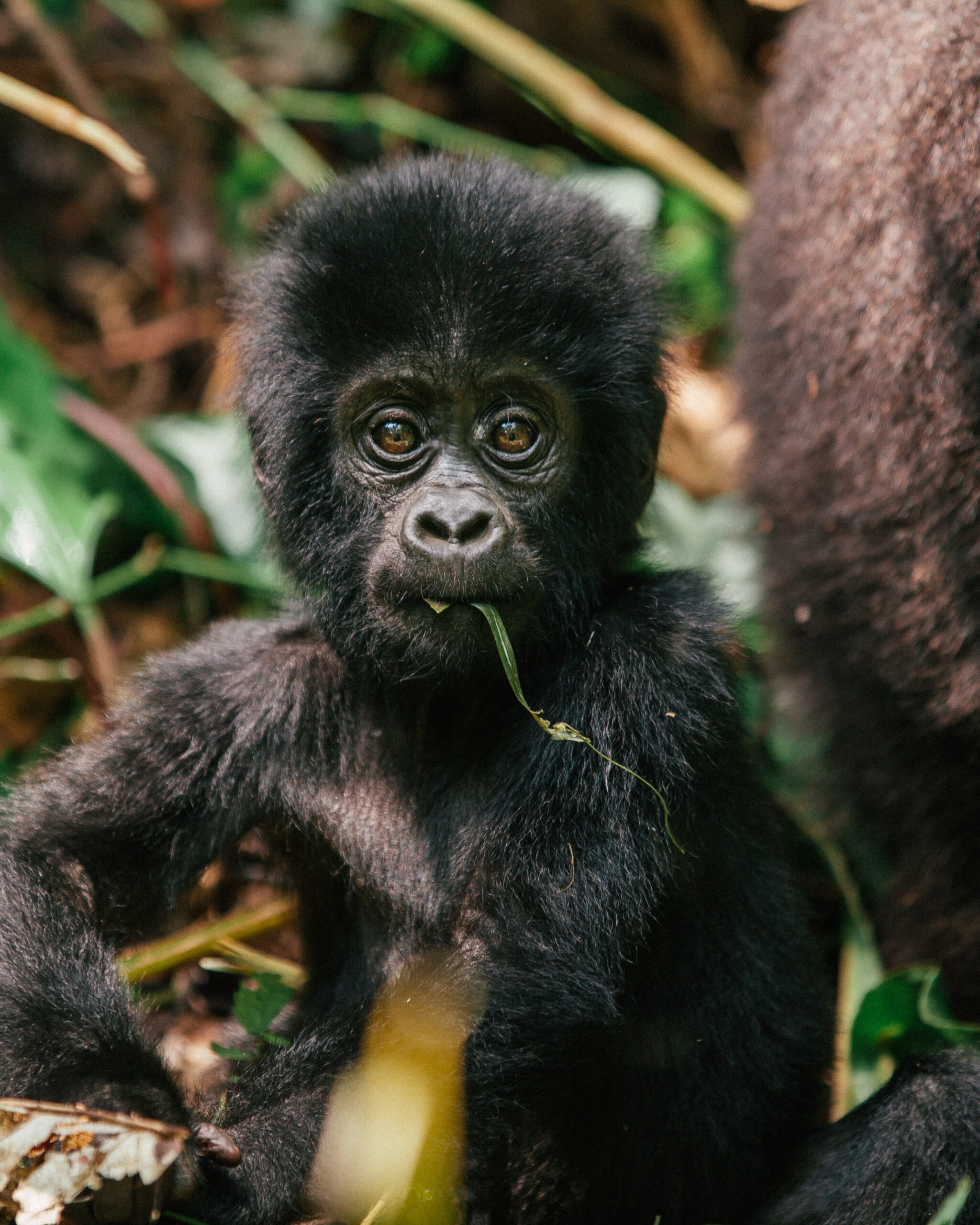
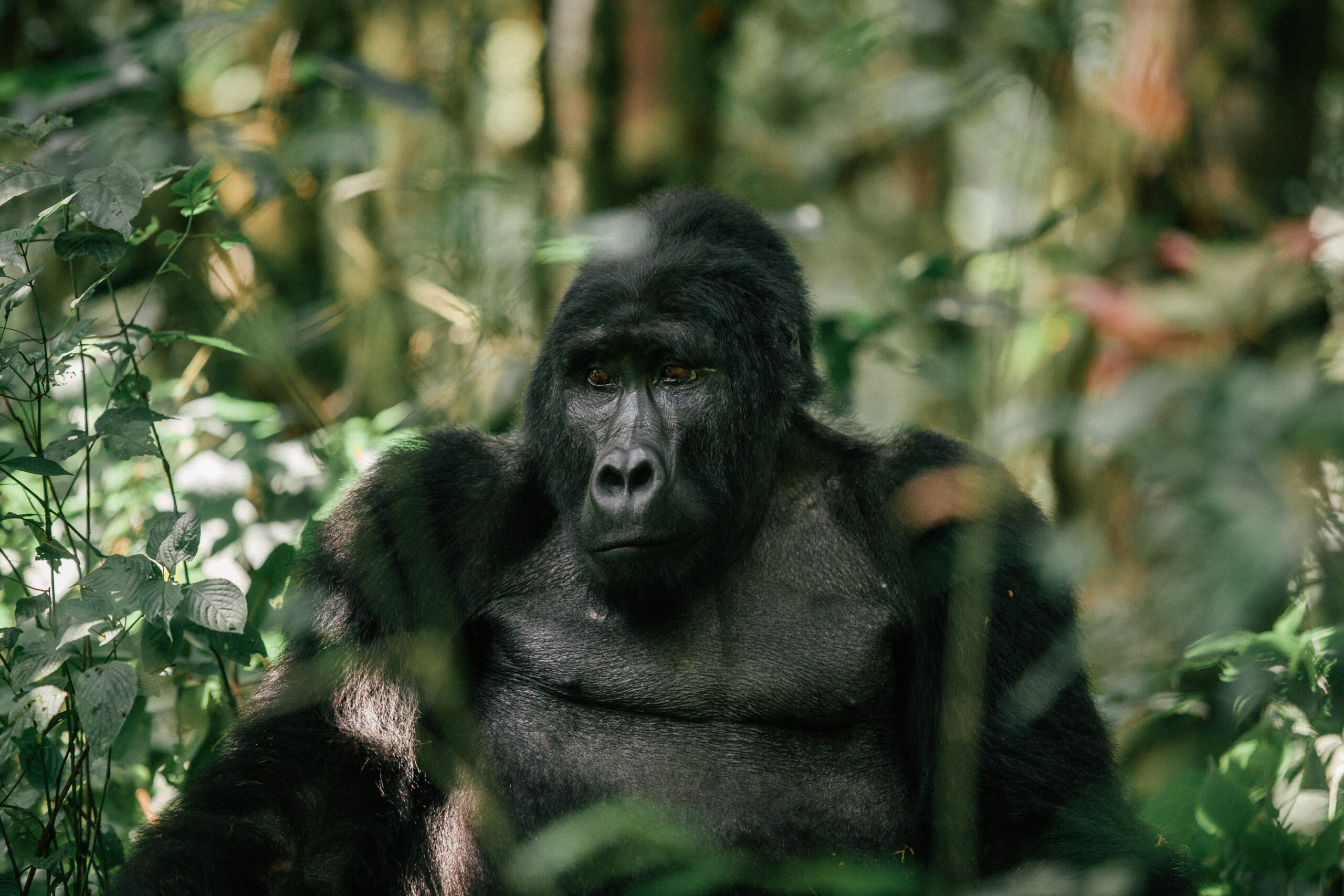
Our presence didn’t seem to have an effect on the gorillas. They treated us as though we were just trees in the jungle and went about their morning.
GORILLA PERMITS
There are a limited number of permits per day, so these need to be secured in advance through the Ugandan Wildlife Authority (UWA). Permits must be purchased in person, so unless you plan to be in Uganda one to two years prior to your trek, a registered tour operator is the best way to secure the permit. Most people purchase the permit as part of a larger package, but if you’re only interested in permits, most tour operators can secure them for a small fee – more details on the company we used are below.
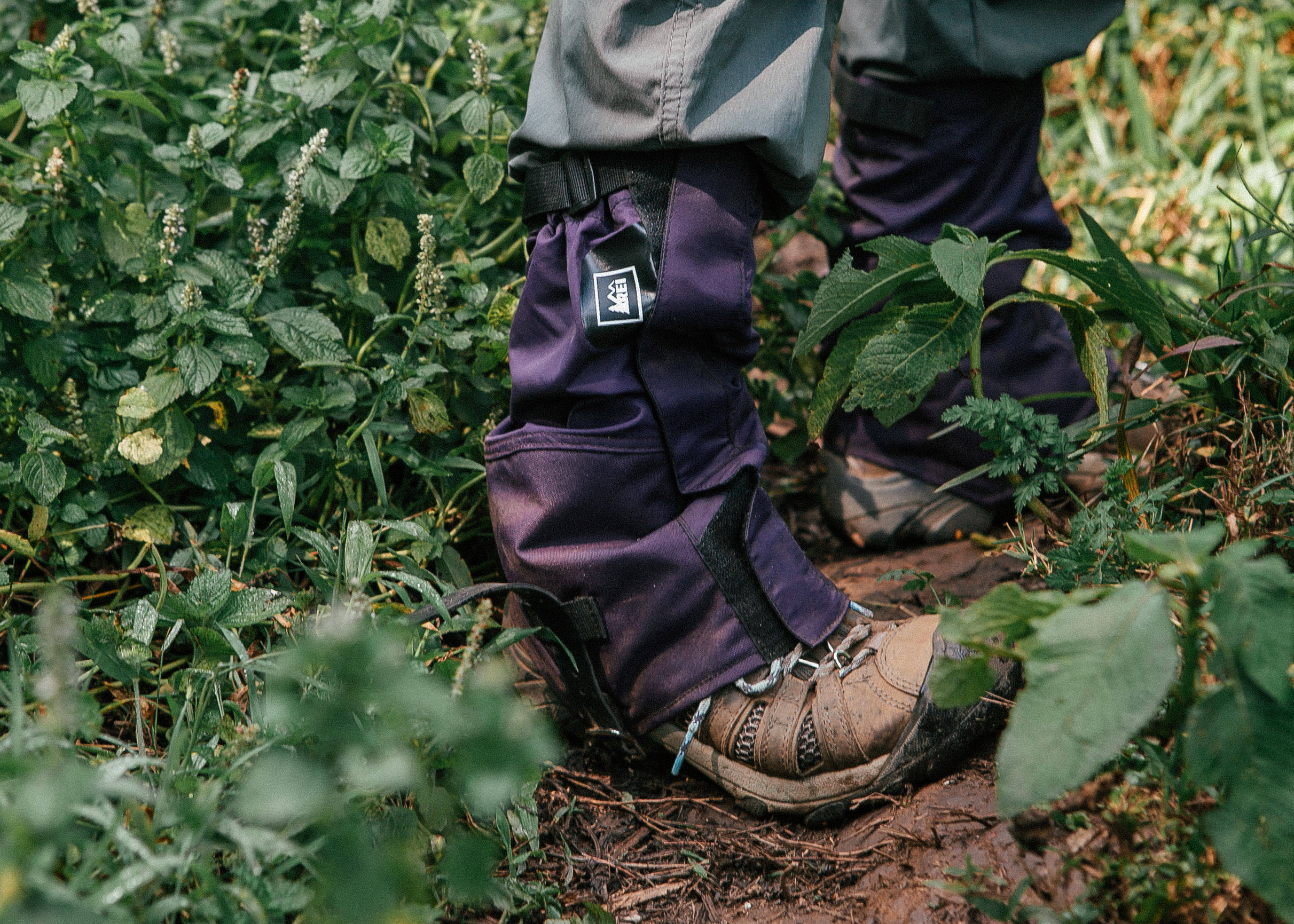
Gaiters are a must in the Bwindi Impenetrable Rainforest. Safari ants are everywhere. Even with the gaiters, I had ants climbing up my pants and biting my legs.
UGANDA TOUR OPERATORS
I’m not a fan of tour groups or guided tours, but working with a tour operator is pretty essential for a trip to Uganda. Some visitors book their entire holiday through these companies, while others use them for just a portion of the trip. At the very least, you’ll want to go through an operator for gorilla permits, chimpanzee permits, safari vehicles and a driver (it’s very complicated to do it any other way).
That said, it’s important to use a company that is registered with the UWA to ensure they are certified, qualified and legitimate. Operators range from luxury to mid-range, and all offer a variety of tour packages that include a complete itinerary, safari vehicle, private driver, lodging, park permits and tours costs.
I didn’t want a cookie cutter itinerary, and mapped out our entire trip a year in advance. While it included several popular stops, I also worked in activities and locations that weren’t part of standard tour packages. I e-mailed several tour operators with the itinerary, and requested quotes for a safari vehicle, private driver and tracking permits. Prices varied by company. After a lot of research, I decided on Gorilla Tours. The reviews of the company on TripAdvisor were very positive, and the prices were pretty reasonable. I booked all our lodging separately, and we paid park fees and activity costs out of pocket while in Uganda.
Overall, we were completely happy with Gorilla Tours – they were accommodating, pleasant and easy to communicate with by e-mail. Our spacious Land Cruiser was equipped with a pop-top for game drives and eight seats for our group of four. The best part of our trip was the two weeks we spent with our driver and guide Musa, I couldn’t imagine traveling the country with anyone else. He brought a level of warmth, authenticity and knowledge to our trip that made it truly special.
Other companies I found with very positive feedback and reviews include Kazinga Tours & Safaris, Churchill Safaris and Africa Tours Adventure.
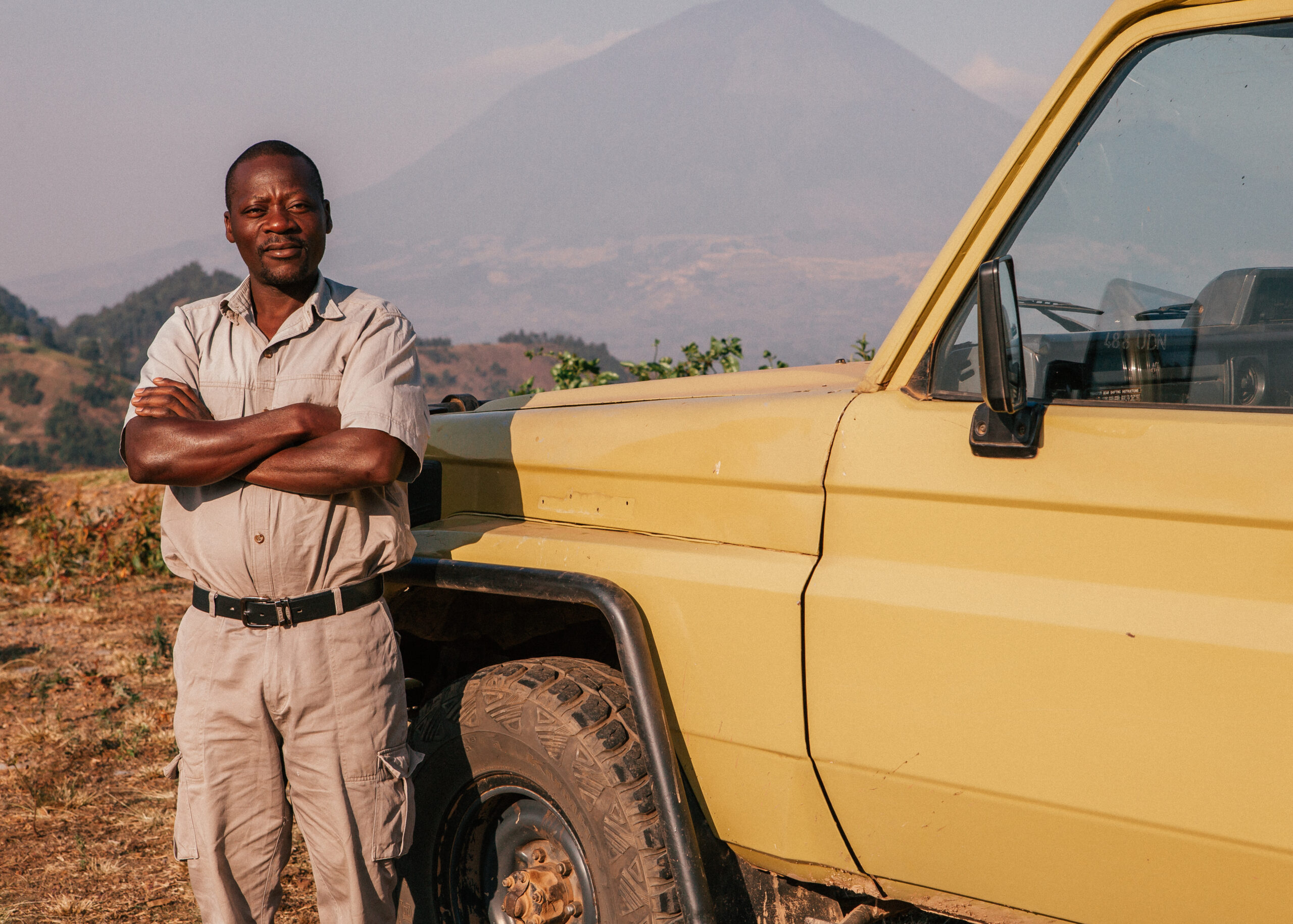
We spent two weeks with our rockstar driver Musa.
GORILLA TRACKING LOCATIONS IN BWINDI IMPENETRABLE RAINFOREST
There are four areas to track the mountain gorillas in the Bwindi Impenetrable Rainforest – Buhoma, Nkuringo, Rujija and Rushaga. These four sectors are where 14 habituated gorilla families reside, groups ranging in size from 10 to 20+ members. Nshongi is the largest family. The UWA allots eight tracking permits per day, per gorilla family accompanied by UWA rangers. Visitors get exactly one hour with the gorillas once they are spotted. When I arranged our permits through Gorilla Tours, I sent them our first, second and third choices for gorilla families to track. Habinyanja was our first choice, and we got it.
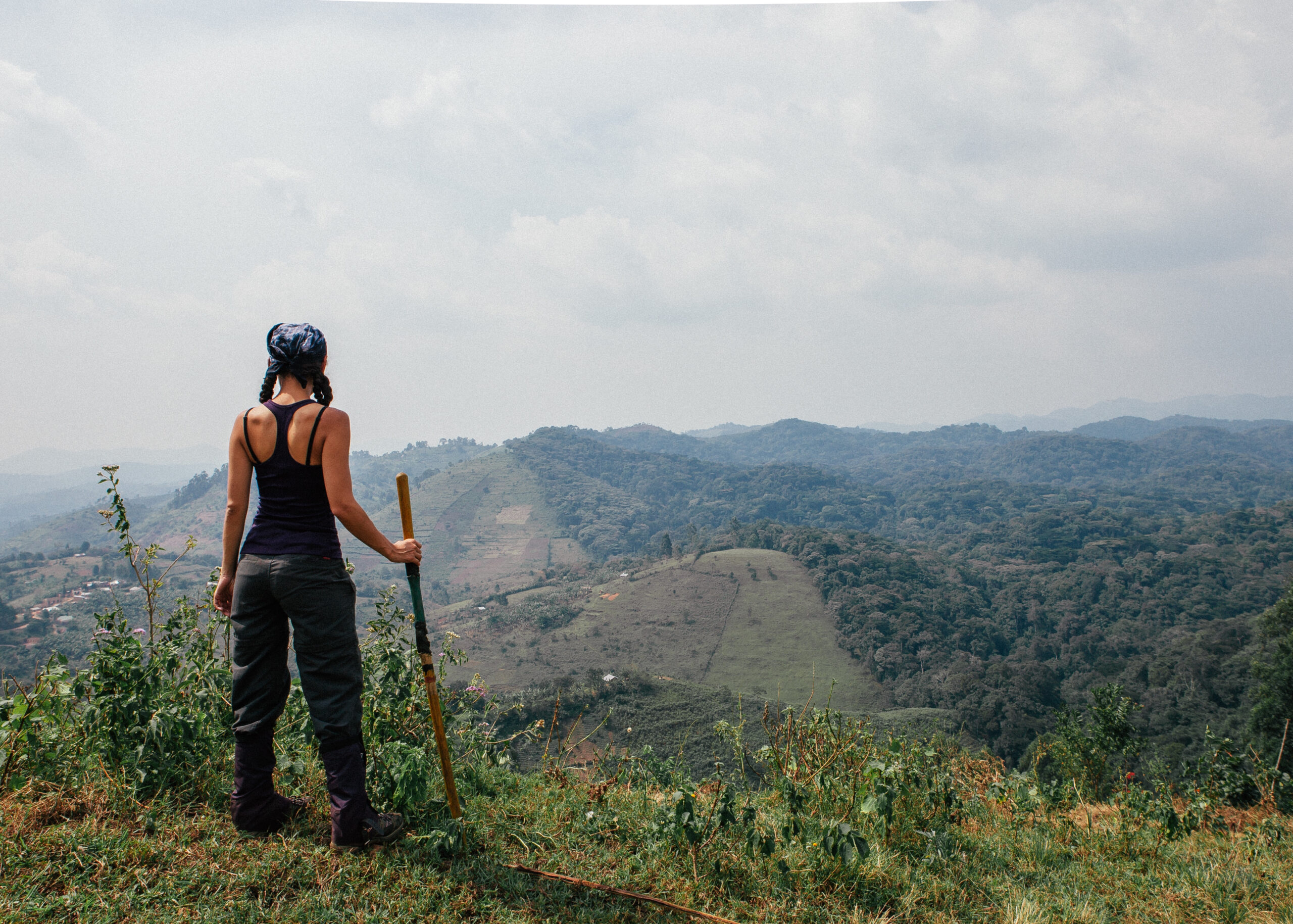
Soaking in the views where the countryside meets the rainforest.
TREKKING INTO BWINDI
It’s a 7AM call time for the start of the gorilla trek. If your base is Buhoma, you’ll meet at the Visitor Centre, located next to the Buhoma Community Rest Camp. It starts with a short briefing where a lead ranger walks everyone through the day, covering guidelines and regulations – most of the information very familiar to all of us. Everyone then splinters off into three smaller groups that head one to two hours in opposite directions by Land Cruiser to track their permitted gorilla groups – Mubare, Rushegura and Habinyanja.
Our journey on foot into the Bwindi Impenetrable Rainforest was an adventure in itself. I’ve explored my share of tropical jungles, but nothing as remote and off-the-beaten-path as Bwindi. It truly felt like the edge of the world. No paths, no people – just untouched rainforest that we needed machetes to get through. It wasn’t the longest hike of my life, but the terrain made it one of the most challenging with dense overgrowth, unruly ferns, safari ants, uneven footing, slippery slopes, giant bugs, hanging vines and muddy inclines. Truly, a badass adventure.
The mountain gorillas are constantly on the move, and the rangers can’t predict how long it will take to find them. Some groups find the gorillas in an hour, while others search for five hours. It took us two hours to find the Habinyanja group. The permits limit trekkers to 60 minutes with the gorillas, and the clock starts the minute the primates come into sight. We were a group of seven hikers, but completely outnumbered by the 16 mountain gorillas that surrounded us.
The endangered primates are a surreal sight, seemingly unfazed by our smiles, stares and camera snaps. For the full hour, we sat amongst the trees and watched in awe as baby gorillas played in the branches, the Silverback cleaned the coats of his companions, mama gorillas munched on bamboo reeds and several group members were sprawled out asleep on the ground around us.
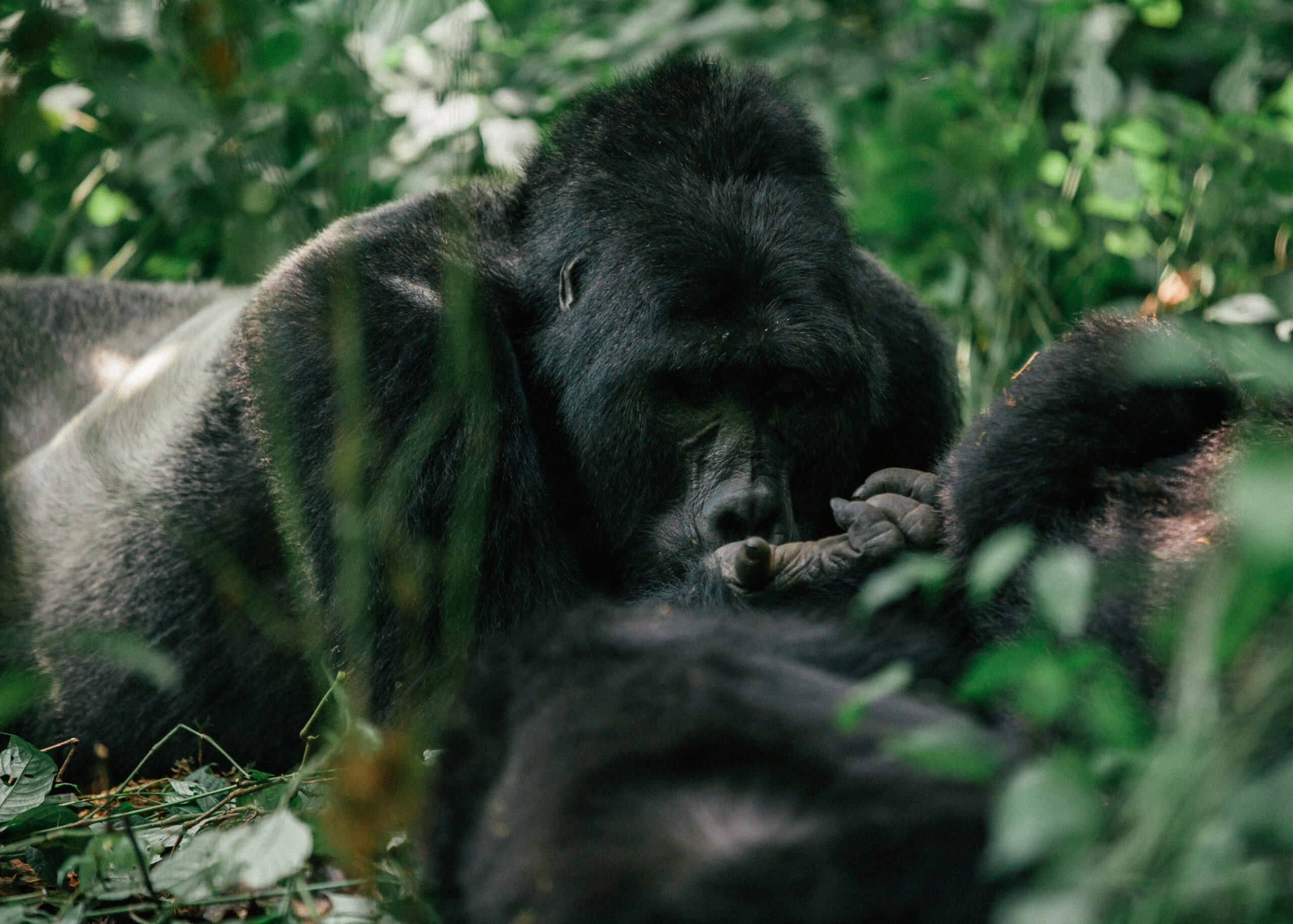
The family’s great silverback.
EXPLORE BUHOMA
Buhoma is the name of the village we stayed at inside the Bwindi Impenetrable Rainforest. If you have permits to track the Mubare, Rushegura or Habinyanja families, Buhoma is where you will base yourself.
MUYANGA WATERFALL
This 2km trek along the Munyaga River to reach this 33ft waterfall takes approximately three hours round trip. High possibility of monkey sightings.
RAINFOREST HIKE TO NKURINGO
It’s a 13 km uphill hike to reach Nkuringo from Buhoma. This trek cuts straight through the Bwindi Impenetrable Rainforest, but unlike the gorilla tracking, this hike is on a proper trail. Hikers must be accompanied by a guide – we booked ours through Nkuringo Walking Safaris. It’s a grueling hike that takes five to seven hours, so best done as a one-way adventure where your driver meets you in Nkuringo with the safari vehicle and luggage. Note that it will be a seven-hour journey from Buhoma to Nkuringo for the driver because the only route is a 120km bumpy road around the rainforest.
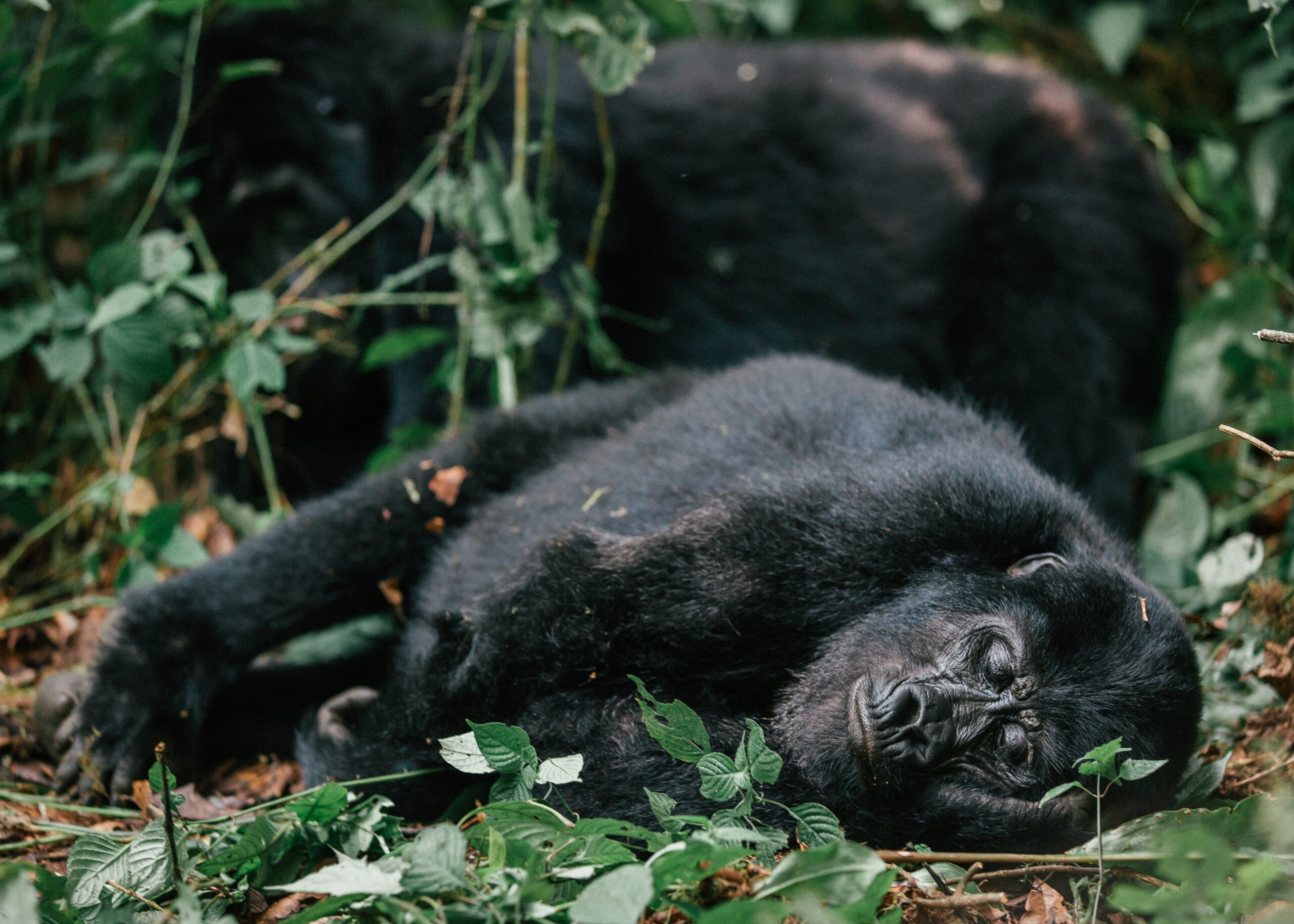
The group’s giant Silverback sits behind this sleeping beauty.
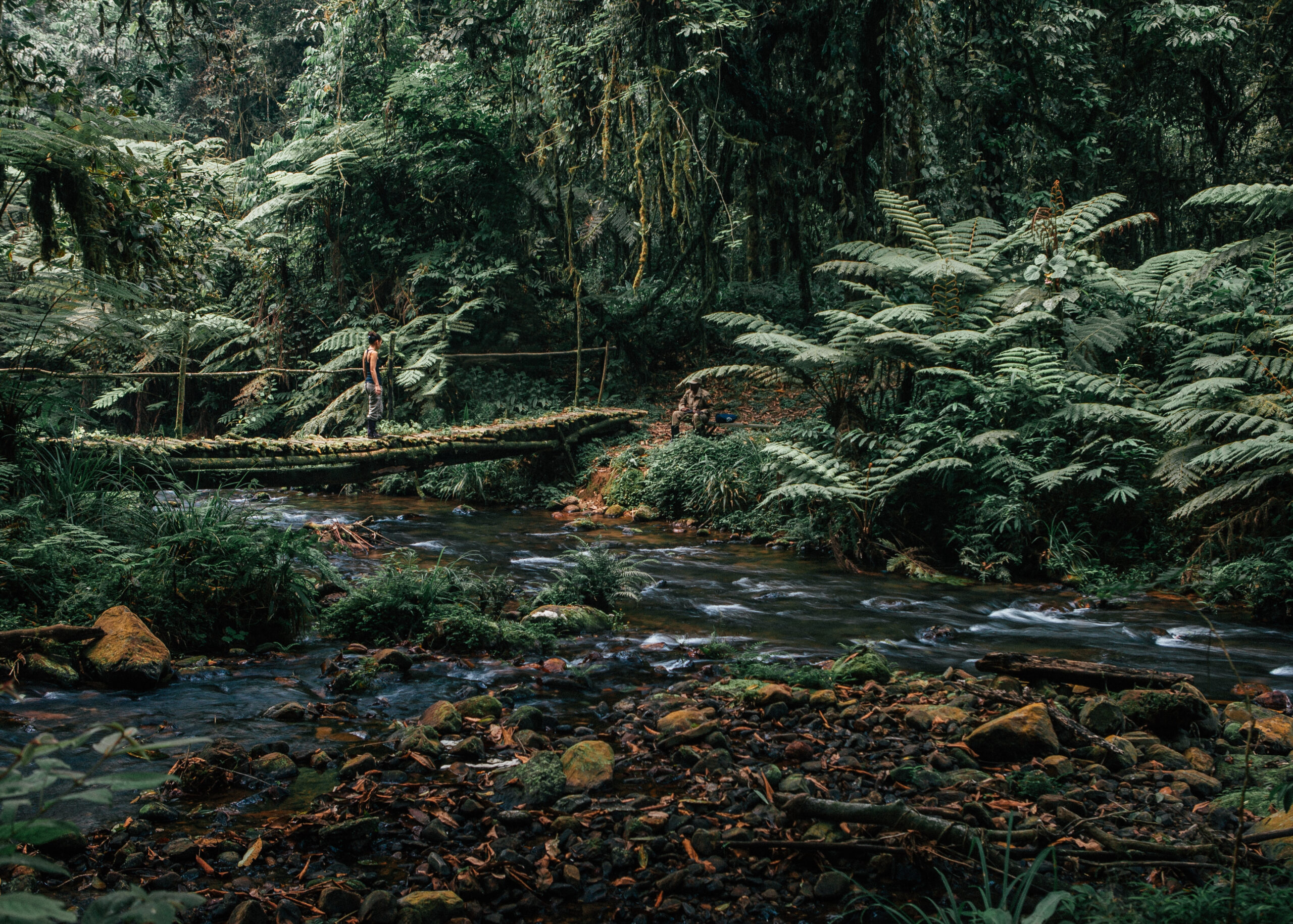
The most challenging adventure of the trip was a 13km hike through the rainforest that connects Buhoma to Nkuringo.
STAY IN BUHOMA
If you have plans to visit the Bwindi Impenetrable Rainforest, make sure to map out lodging options based on the gorilla group you are tracking. There are different meeting points for the different gorilla groups, and you want to make sure yours is reachable in a reasonable amount of time. The distances in this a part of the country are deceiving because there are no direct roads through the Bwindi Impenetrable Rainforest. For example, on a map the Nkuringo Bwindi Gorilla Lodge appears to be a mere 12 km from the Buhoma Visitors Centre, a meeting point for three of the gorilla groups. However, it’s a seven hour drive because the only route is the road around the rainforest. So, if you’re tracking the Mubare, Rushegura or Habinyanja family, do not book a stay in Nkuringo.
BUHOMA COMMUNITY REST CAMP
The Buhoma Community Rest Camp sits at the edge of the jungle, very close to the meeting point for tracking the Buhoma gorilla families. The camp is made up of six green safari tents, two bandas and a dormitory built up a lush mountainside that overlooks the rainforest. Guests in the tents are treated to spectacular views of the jungle, and sometimes the resident monkeys. The tents are equipped with beds, a storage bench, private shower and toilet (nothing fancy, very rustic).
Upscale lodge made up of eight eco-friendly cottages surrounded by the Bwindi Impenetrable Rainforest. The Buhoma Lodge rooms are spacious and elegantly furnished with verandas that open up to sweeping views of the surrounding rainforest.
One of my more modern jungle lodges in Buhoma that consists of eight en-suite cottages, an expansive dining area and verandah that overlooks the rainforest.
